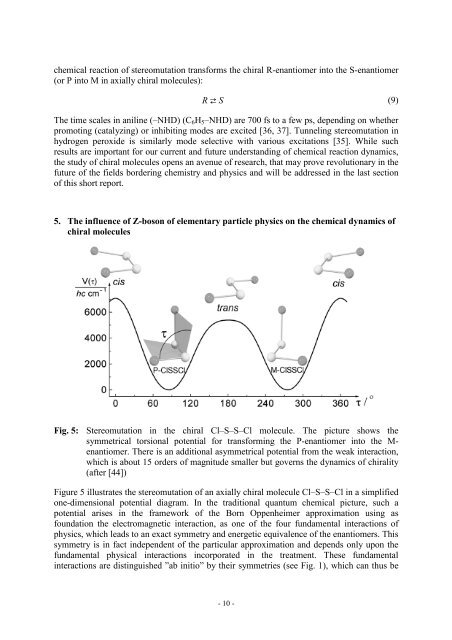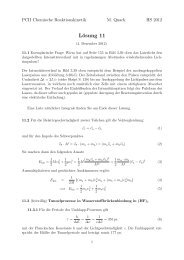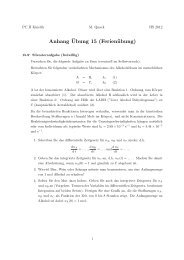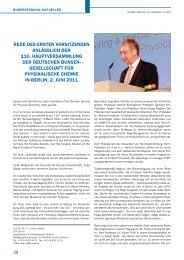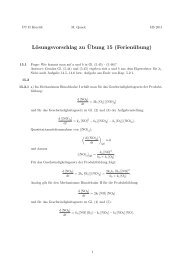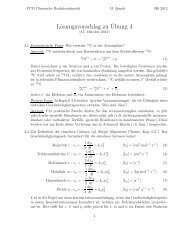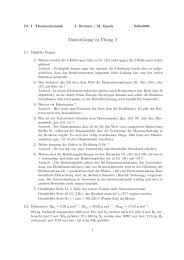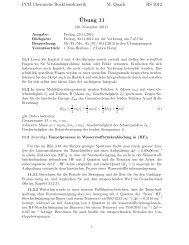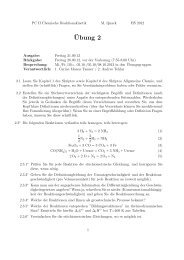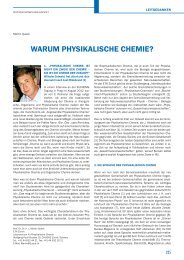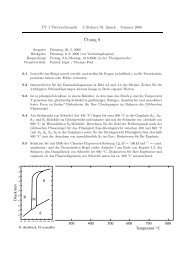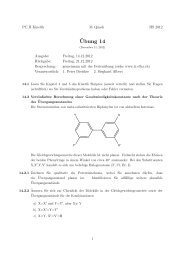Molecules in Motion - Quack - ETH Zürich
Molecules in Motion - Quack - ETH Zürich
Molecules in Motion - Quack - ETH Zürich
You also want an ePaper? Increase the reach of your titles
YUMPU automatically turns print PDFs into web optimized ePapers that Google loves.
chemical reaction of stereomutation transforms the chiral R-enantiomer <strong>in</strong>to the S-enantiomer<br />
(or P <strong>in</strong>to M <strong>in</strong> axially chiral molecules):<br />
R S (9)<br />
The time scales <strong>in</strong> anil<strong>in</strong>e (–NHD) (C 6 H 5 –NHD) are 700 fs to a few ps, depend<strong>in</strong>g on whether<br />
promot<strong>in</strong>g (catalyz<strong>in</strong>g) or <strong>in</strong>hibit<strong>in</strong>g modes are excited [36, 37]. Tunnel<strong>in</strong>g stereomutation <strong>in</strong><br />
hydrogen peroxide is similarly mode selective with various excitations [35]. While such<br />
results are important for our current and future understand<strong>in</strong>g of chemical reaction dynamics,<br />
the study of chiral molecules opens an avenue of research, that may prove revolutionary <strong>in</strong> the<br />
future of the fields border<strong>in</strong>g chemistry and physics and will be addressed <strong>in</strong> the last section<br />
of this short report.<br />
5. The <strong>in</strong>fluence of Z-boson of elementary particle physics on the chemical dynamics of<br />
chiral molecules<br />
Fig. 5: Stereomutation <strong>in</strong> the chiral Cl–S–S–Cl molecule. The picture shows the<br />
symmetrical torsional potential for transform<strong>in</strong>g the P-enantiomer <strong>in</strong>to the M-<br />
enantiomer. There is an additional asymmetrical potential from the weak <strong>in</strong>teraction,<br />
which is about 15 orders of magnitude smaller but governs the dynamics of chirality<br />
(after [44])<br />
Figure 5 illustrates the stereomutation of an axially chiral molecule Cl–S–S–Cl <strong>in</strong> a simplified<br />
one-dimensional potential diagram. In the traditional quantum chemical picture, such a<br />
potential arises <strong>in</strong> the framework of the Born Oppenheimer approximation us<strong>in</strong>g as<br />
foundation the electromagnetic <strong>in</strong>teraction, as one of the four fundamental <strong>in</strong>teractions of<br />
physics, which leads to an exact symmetry and energetic equivalence of the enantiomers. This<br />
symmetry is <strong>in</strong> fact <strong>in</strong>dependent of the particular approximation and depends only upon the<br />
fundamental physical <strong>in</strong>teractions <strong>in</strong>corporated <strong>in</strong> the treatment. These fundamental<br />
<strong>in</strong>teractions are dist<strong>in</strong>guished ”ab <strong>in</strong>itio” by their symmetries (see Fig. 1), which can thus be<br />
- 10 -


